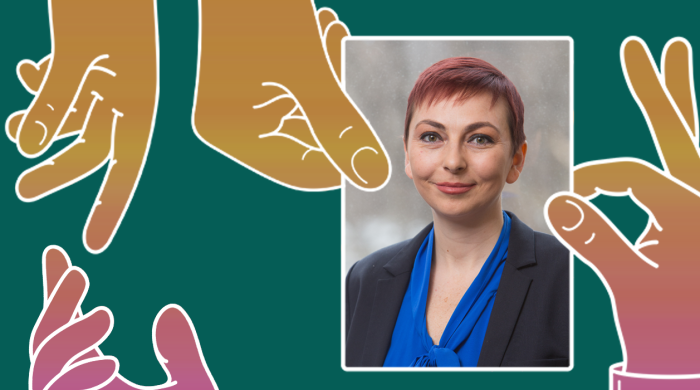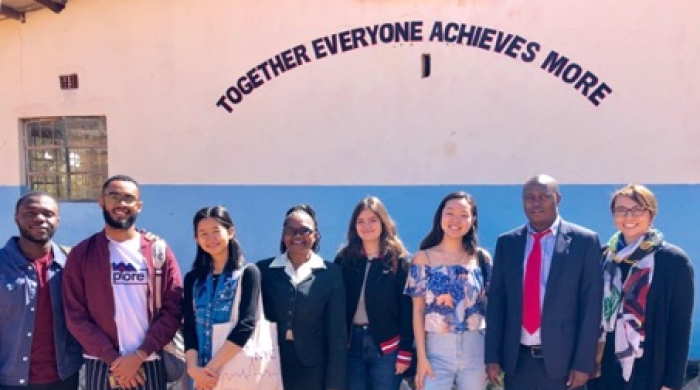Written by Dr. Janet Njelesani
What inspired you to do research on school violence and bullying?
Schools are obligated to protect all children from all forms of violence in schools. However, while school violence can and does occur against children of all groups and demographics, students with disabilities are at a significantly greater risk than their non-disabled peers. This increased rate of violence against children with disabilities occurs in the majority of countries globally, and in all is driven by stigma-related factors including stereotypes of disability and prejudice. Disability-based stigma includes beliefs about children with disabilities that shape how they are treated. Although across the world there have been many policy developments in inclusive education with more children with disabilities having access to education, a dearth of evidence exists on the violence children with disabilities experience at school, especially children living in low and middle-income countries (LMICs).
How did you come to look at this from both a U.S.-based and international perspective?
I examine the issue of school violence against students with disabilities locally and internationally and the role occupational therapists can play as I believe that every child has the right to be safe at school, and nations have a duty to protect children. However, despite the impact of school violence on students’ performance and that addressing bullying/violence is within occupational therapists’ professional and ethical responsibility to respond, there is an absolute paucity of occupational therapy research and practice that addresses bullying in the U.S. In many LMICs where occupational therapists are not part of service in the education system, the topic also goes largely unaddressed as formal systems of child protection for students with disabilities are not in place at school or in the community, and families with children with disabilities are not provided opportunities to advocate or access help (3). Given the overlapping gaps in the literature, the work can inform one another, particularly as students and their families have similar priorities as their rights are not being met.
How does your research change based on where you are conducting it?
I use critical qualitative research methodologies to generate data. Key to this work is incorporating participatory approaches which involves collaborating with local stakeholders in each setting during the research process, be that NYC DOE teachers or youth with disabilities in Zambia. Using participatory approaches helps to ensure that my work is appropriate to the context where the research is occurring. For example, in Zambia, child-friendly methods are used that have been co-constructed with youth with disabilities, including vignettes, cartoon captioning (see example below), photo-elicitation, drawings, and sentence starters. We choose the methods for use based on each child’s age, strengths, preferences, and abilities.
Evidence tells us that not one intervention has been developed that is universally effective to decrease school violence. Therefore, programs I am co-developing with local partners differ based on where the work is being done. Across settings and contexts, programs that aim to decrease school violence are being tailored to age, grade levels, students’ interest and strengths, and the classroom, school, and community environments. This need to tailor programming is an ideal opportunity for occupational therapists, who have the expertise in person-environment-occupation fit, to tailor interventions to meet the unique needs of students in their settings.
What impact do you hope this research will have?
In each context, the findings of my research complement one another as they illuminate the role for actors across systems to promote safe school policy and practice that reaches students who are victims, students who perpetrate violence, bystanders, and decision makers. Occupational therapists are one of the groups that need to be equipped to address the phenomenon by assuming roles on interprofessional teams (2). The need for interprofessional teams is key as they can bring together expertise across education, mental health, and the physical and social environments to incorporate effective solutions from across fields to address school violence. It is this research implication of having more than solely teachers talk about and work on school violence, that I hope creates change in local and international education settings by bringing health and social service practitioners to the work.
What are some surprising/interesting findings so far?
Students observe how teachers respond to school violence and these observations influence their perception of whether that teacher is someone who will protect them or make the situation worse. Novel findings from my recent work, include that special education teachers were found to protect students with disabilities; however, by this association, special education teachers were experiencing stigma from other teachers and are being discouraged to respond to the school violence they see or hear about (3). This stigma by association undermined the support special education teachers could provide thereby compromising their professional role and contributing to institutional violence as stereotypes of disability and resulting practice created inequality and prevented children’s access to support.
What would you say to someone interested in studying the same phenomenon across two or more radically different places?
In each context forming a collaboration with partners based on respect and reciprocity is key. In order to achieve a sustainable partnership, that combines complementary skills and knowledge so that you can collaborate in mutually beneficial ways to address challenges and expand the reach of perspectives, conducting participatory action research can be a considered (4).
References
- Njelesani, J. (2019). “A child who is hidden has no rights”: Responses to violence against children with disabilities. Child abuse & neglect, 89, 58-69.
- Njelesani, J., Lai, J., Gigante, C. M., & Trelles, J. (2021). Will You Protect Me or Make the Situation Worse?: Teachers’ Responses to School Violence Against Students With Disabilities. Journal of Interpersonal Violence, 08862605211062996.
- Njelesani, J., Attard, K., Duimstra, A., & Zenderman, N. (2020). Addressing School Bullying with a Multi-tiered System of Support Approach. Journal of Occupational Therapy, Schools, & Early Intervention, 1-16.
- Njelesani, J., Stevens, M., Cleaver, S., Mwambwa, L., & Nixon, S. (2013). International research partnerships in occupational therapy: a Canadian–Zambian case study. Occupational Therapy International, 20(2), 78-87.
Learn More
Reaching the Rarely Reached: Dr. Njelesani
As part of the "Reaching the Rarely Reached" series, Mackenzie Whipps asked three NYU practitioner-researchers how and why they conduct research with populations that are often forgotten with in the healthcare system. As an occupational therapist, Dr. Janet Njelesani has spent years working with children with disabilities in low- and middle-income countries.
Janet Njelesani and a Team of Abu Dhabi Students Study Disability Abuse in Zambian Schools
This past summer, students from NYU's Abu Dhabi campus travelled to Zambia to assist OT Assistant Professor Janet Njelesani on a project looking at violence against students with disability in schools.
Janet Njelesani Awarded (NAEd)/Spencer Fellowship to Study Violence Against Students with Disabilities in Zambia
Janet Njelesani’s project, “Generating and Preventing Violence: Schools’ Responses to School Violence Against Students with Disabilities in Zambia,” will investigate how social, cultural, and institutional practices influence inclusion, protection, and education for children with disabilities.





